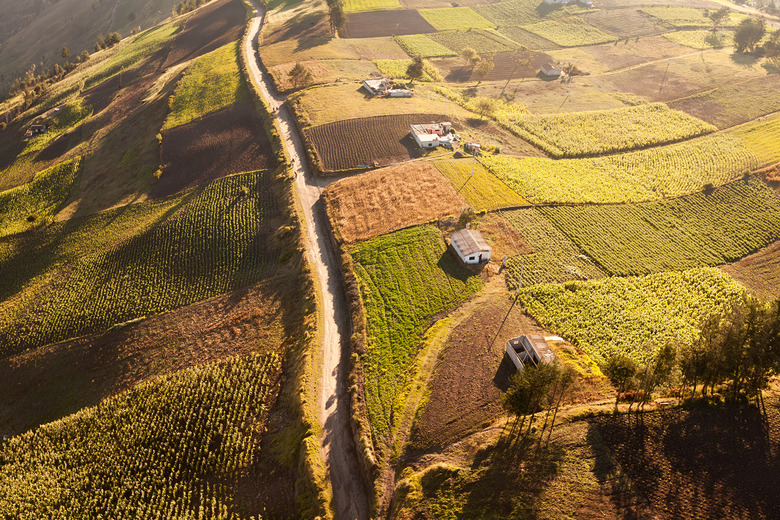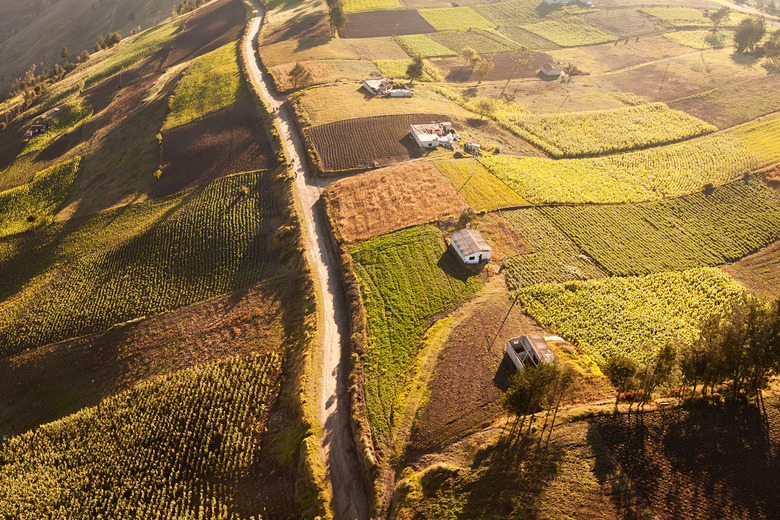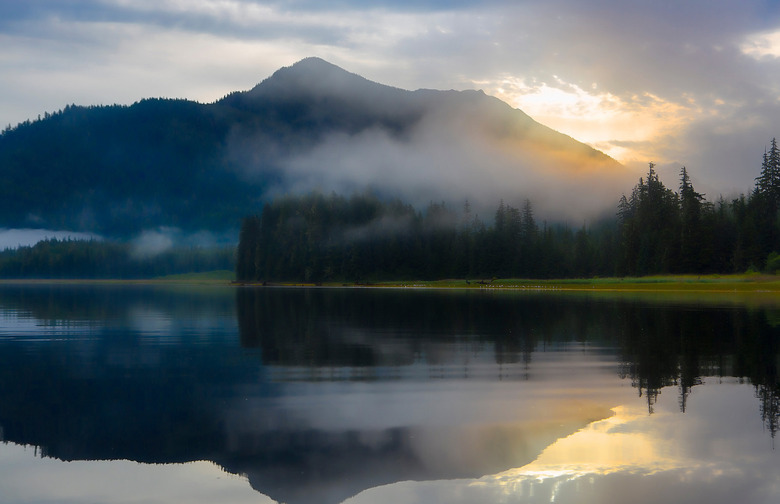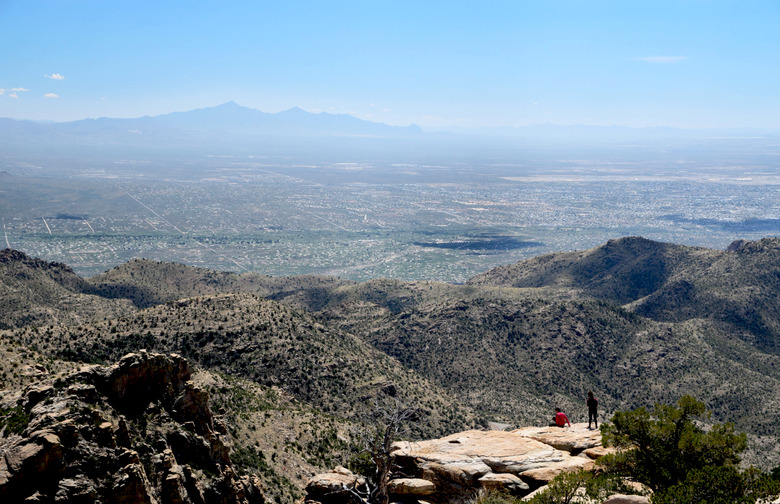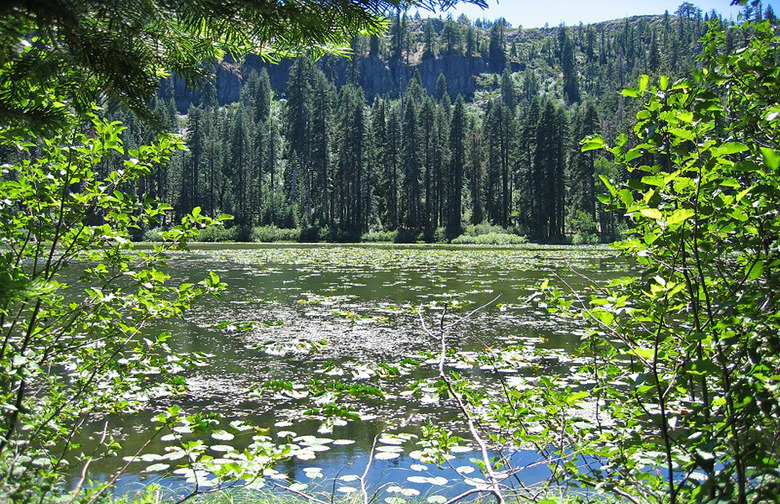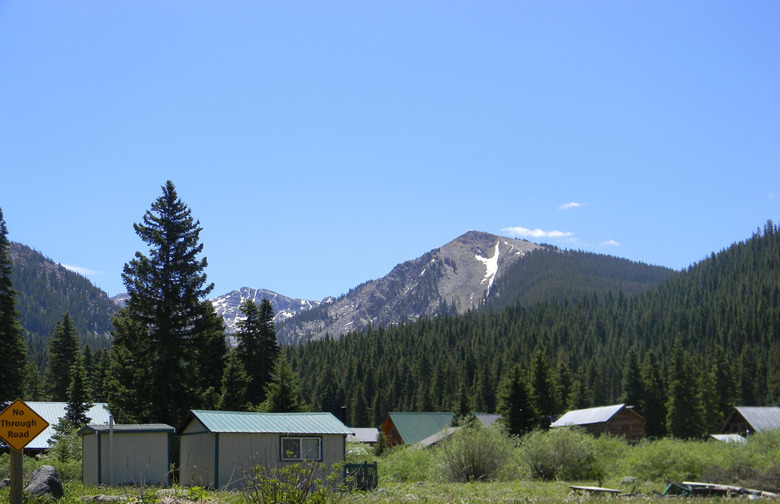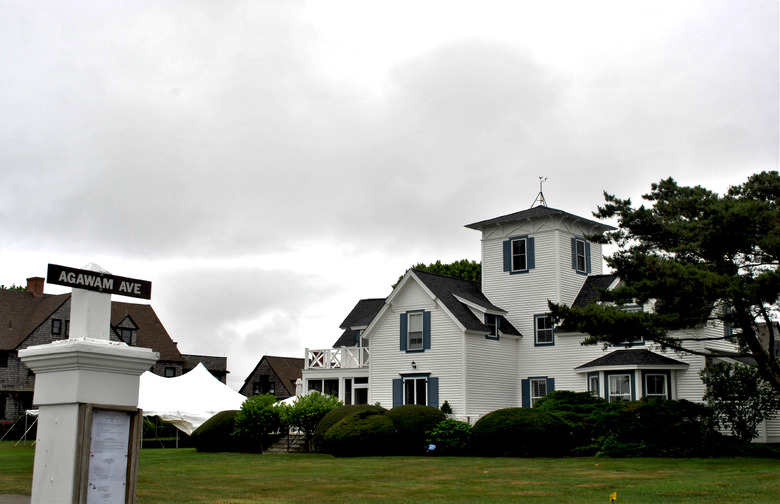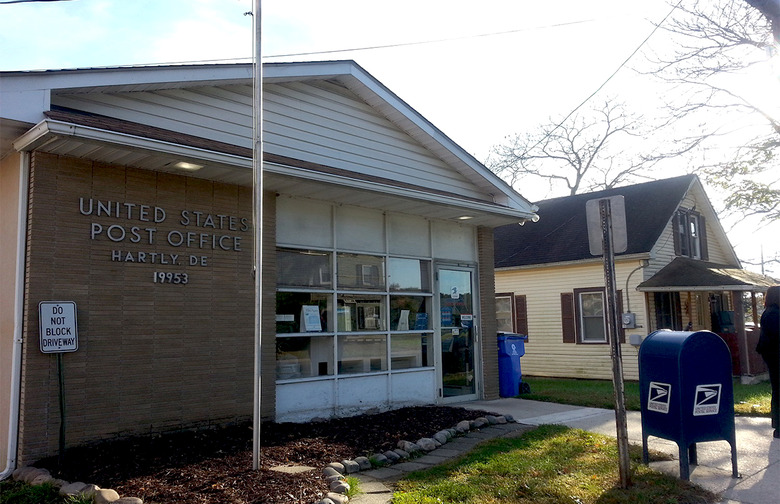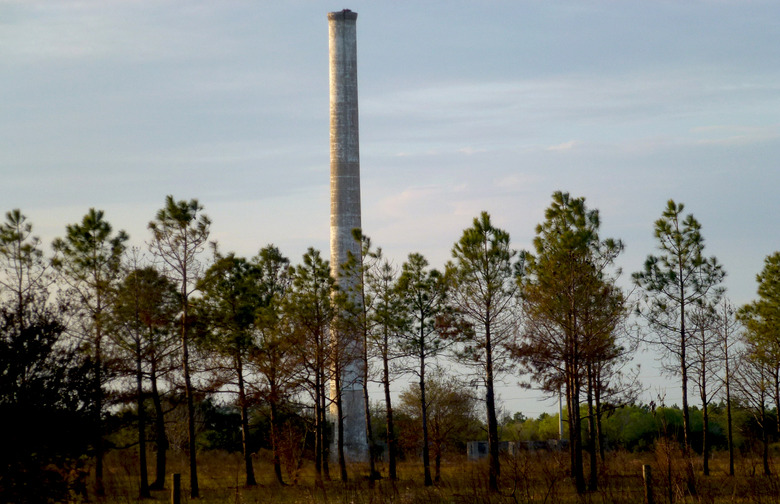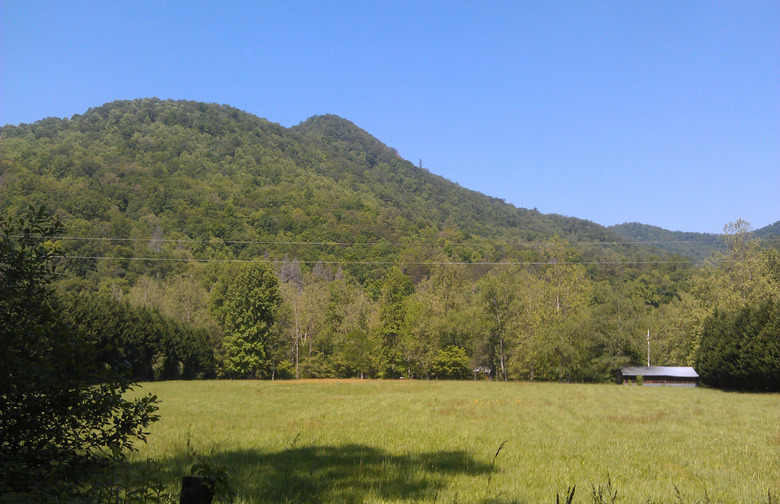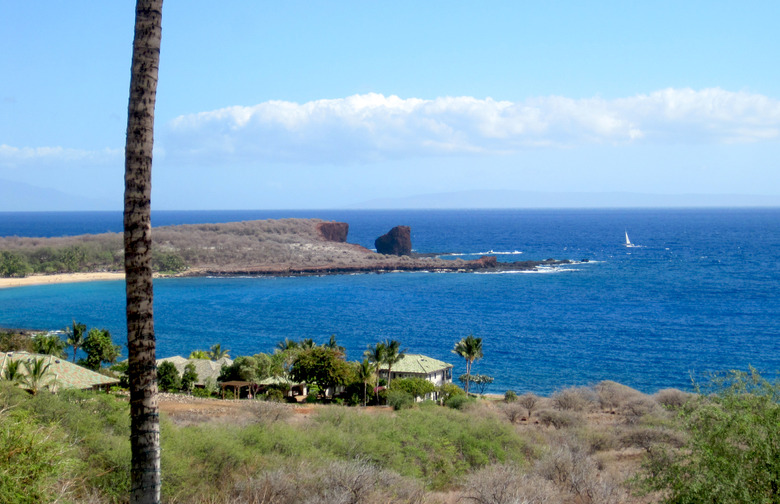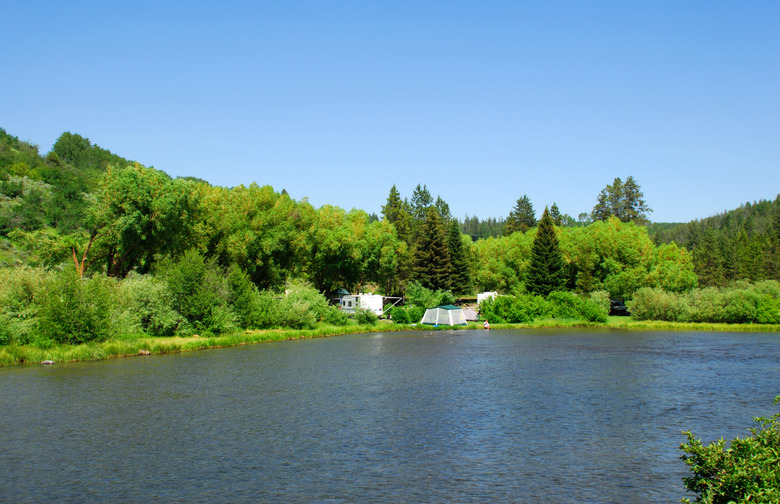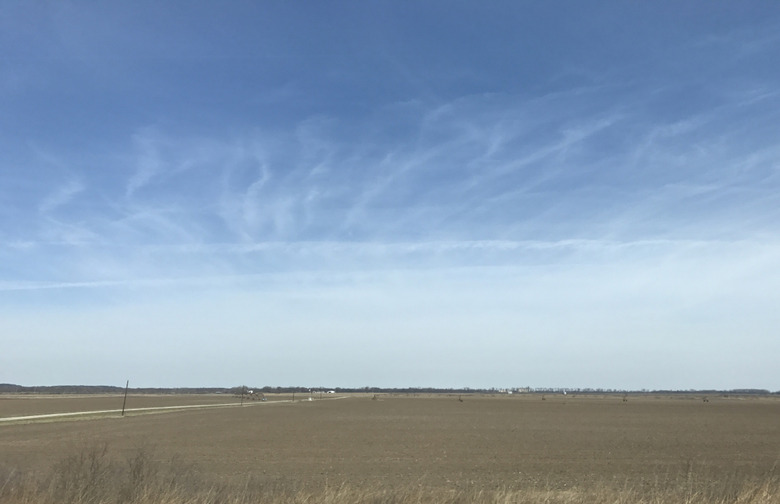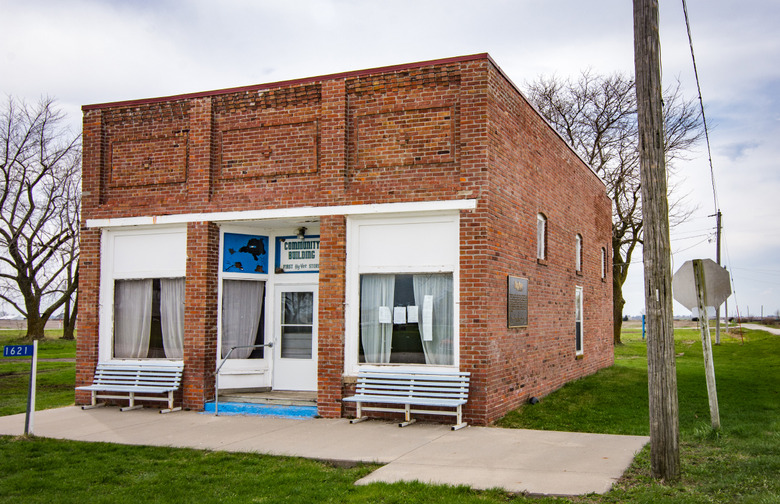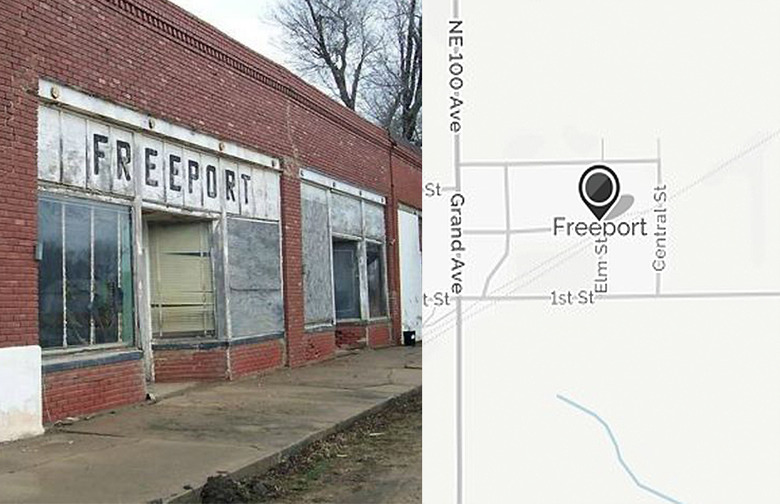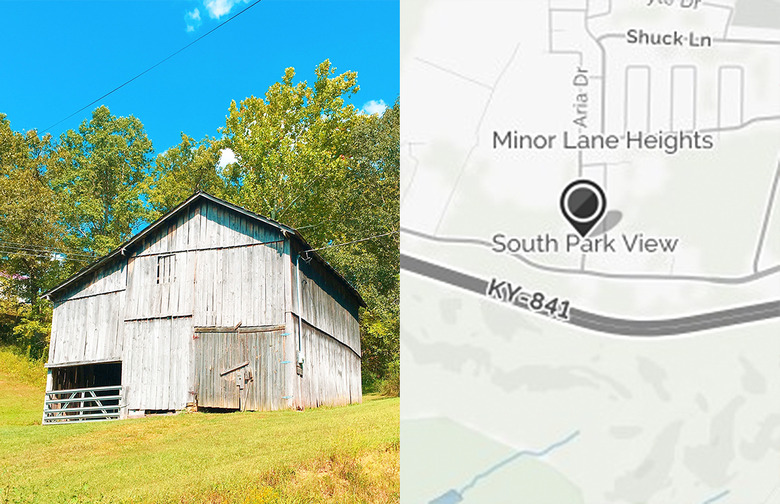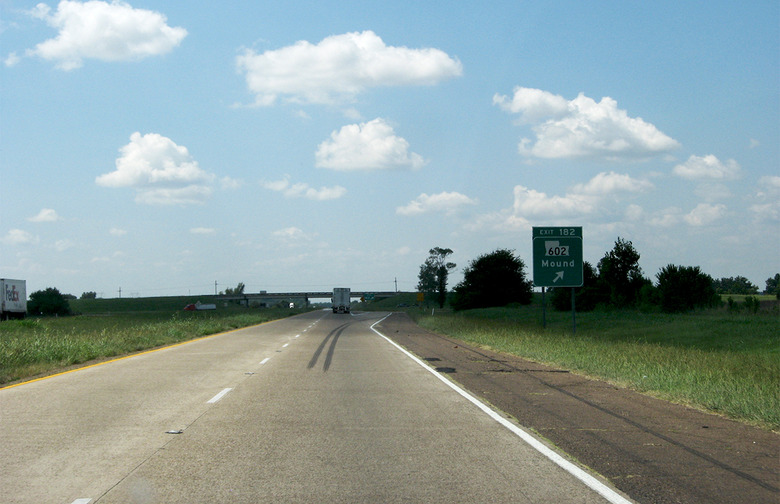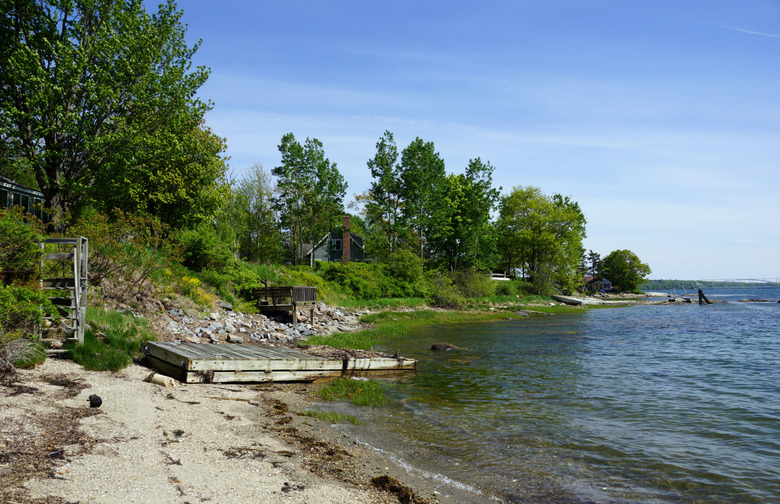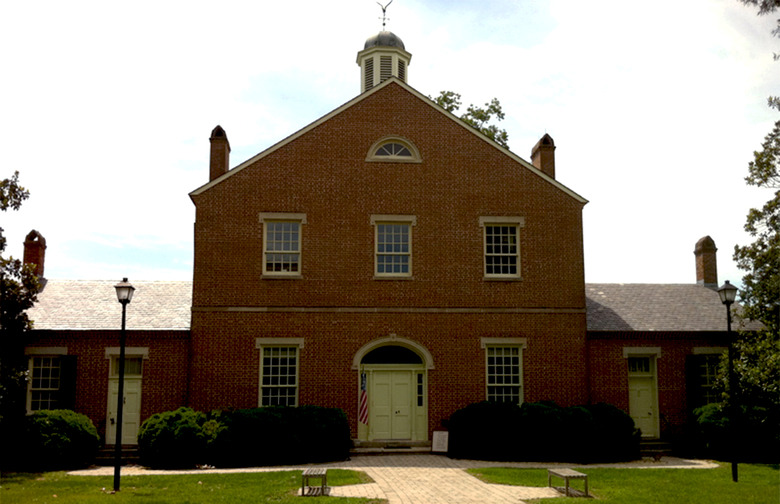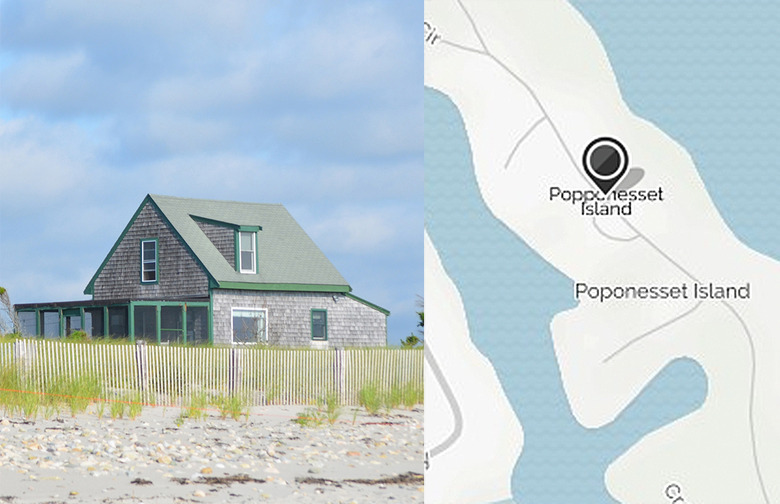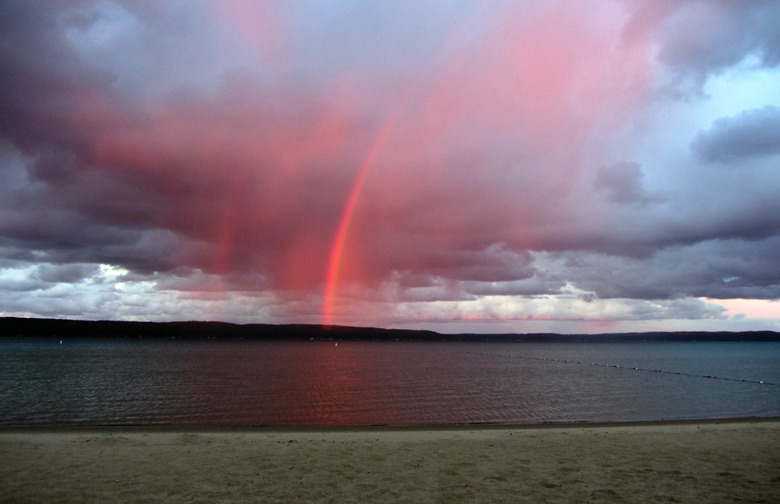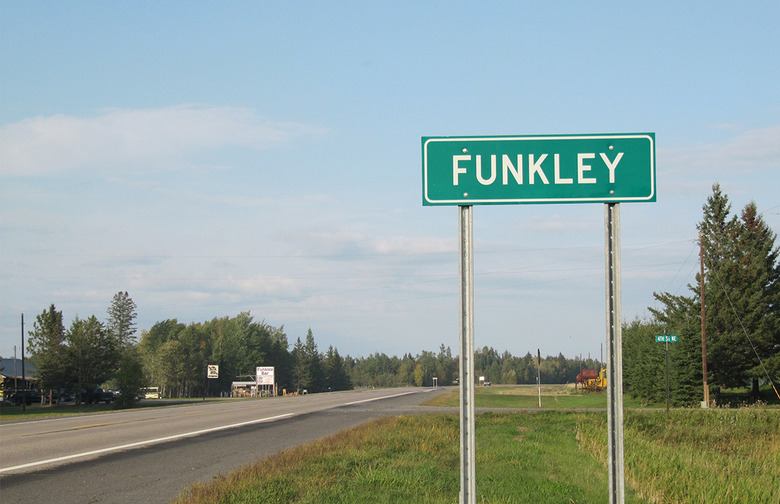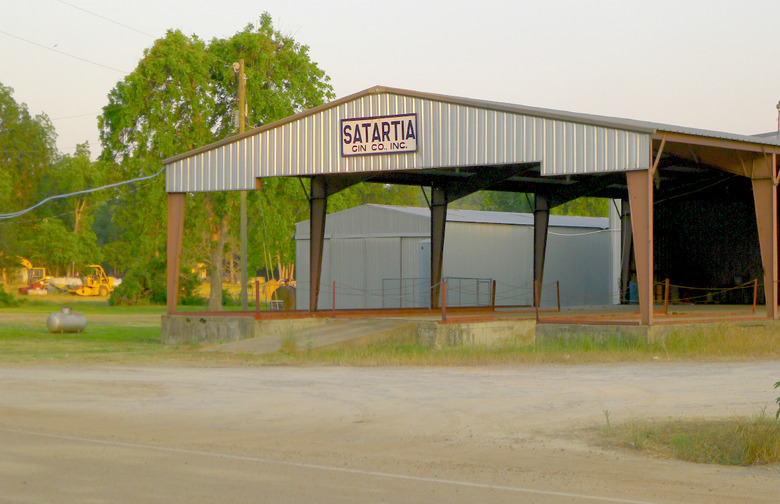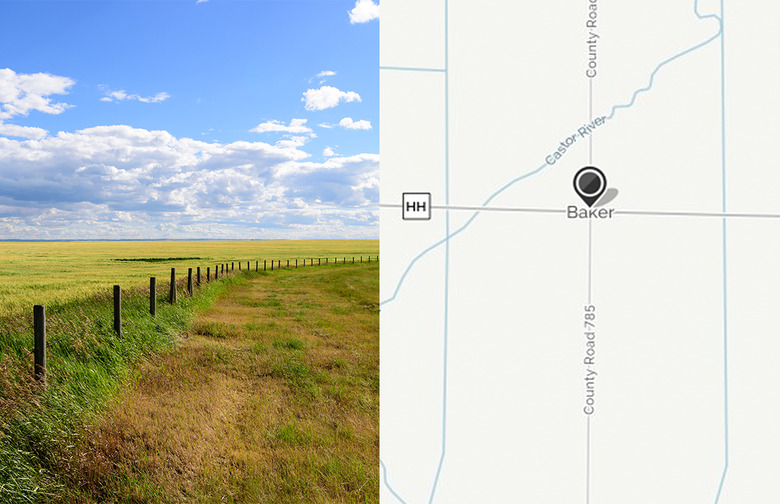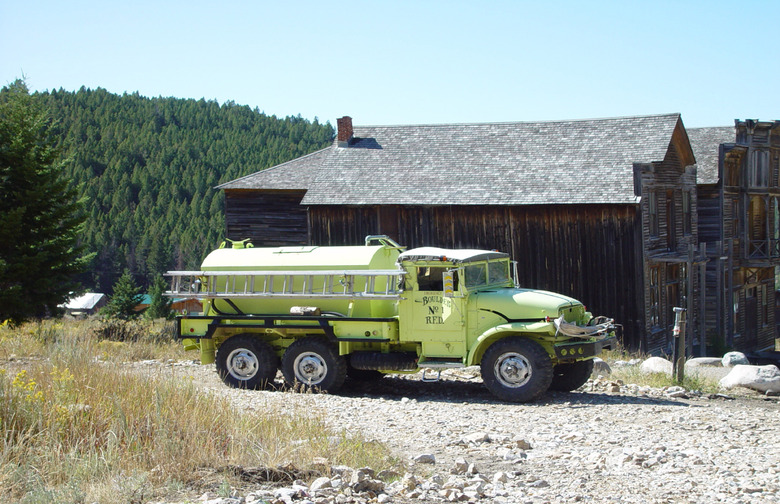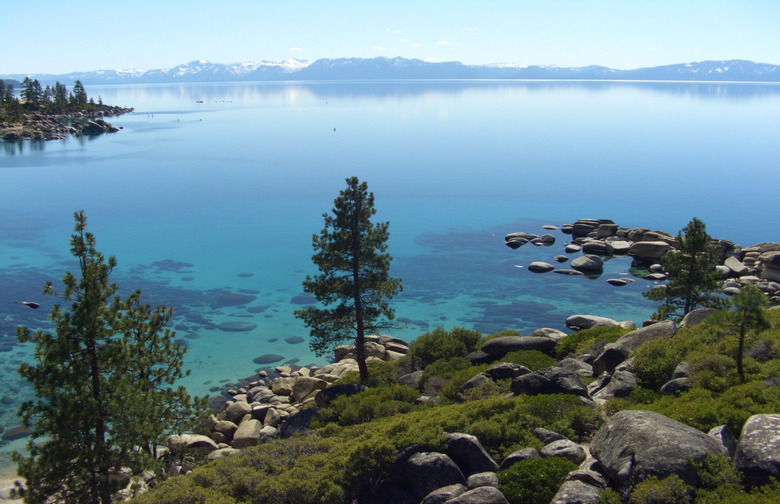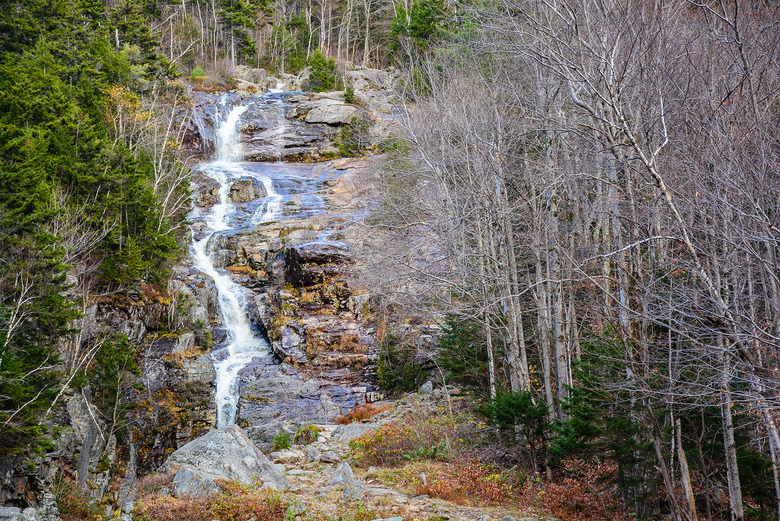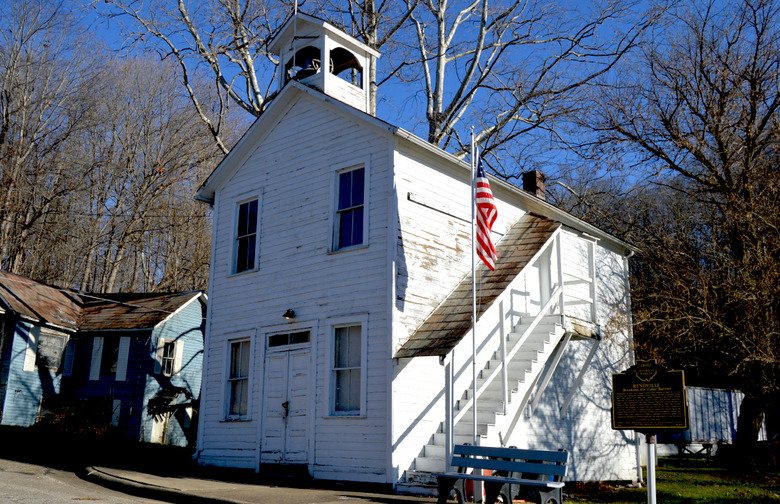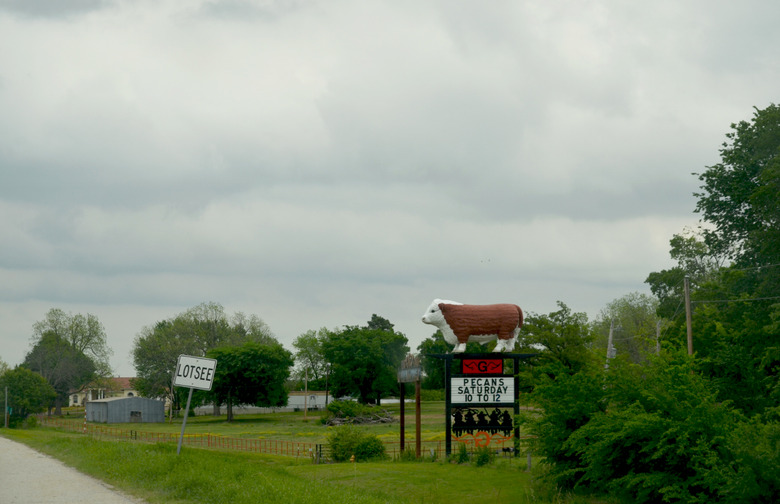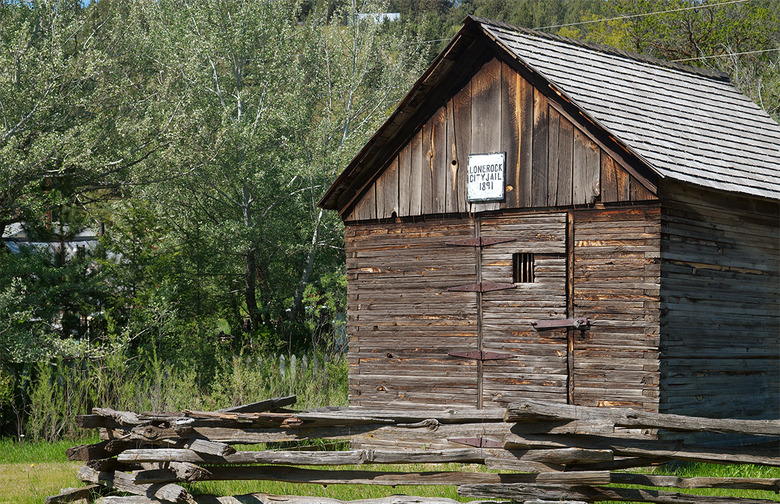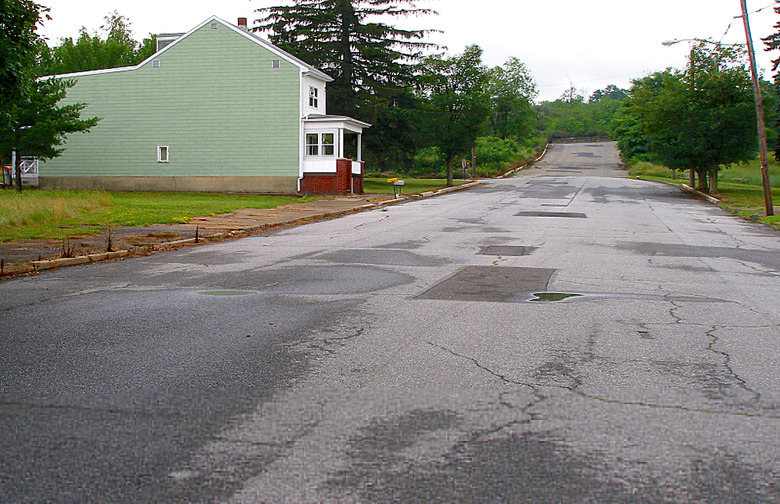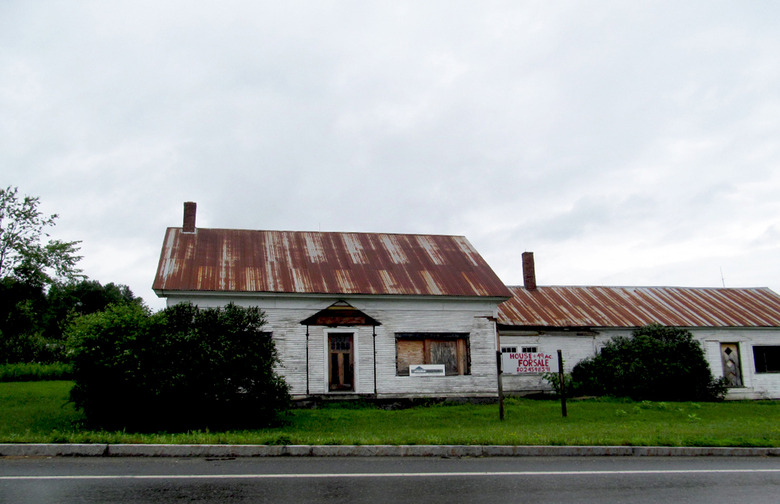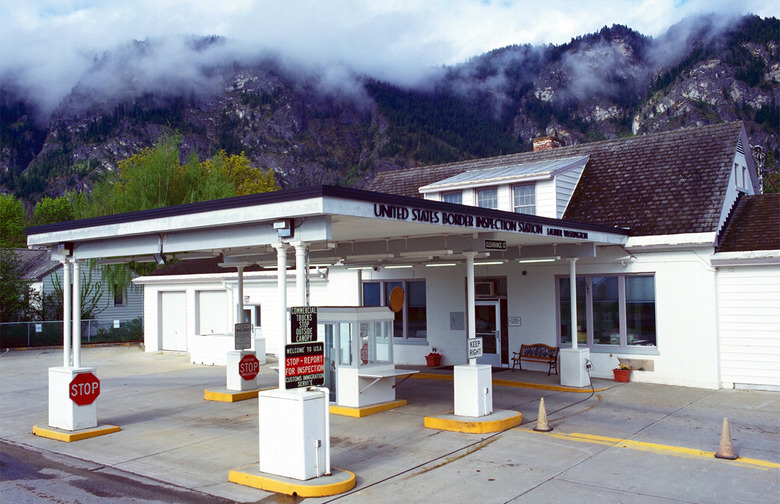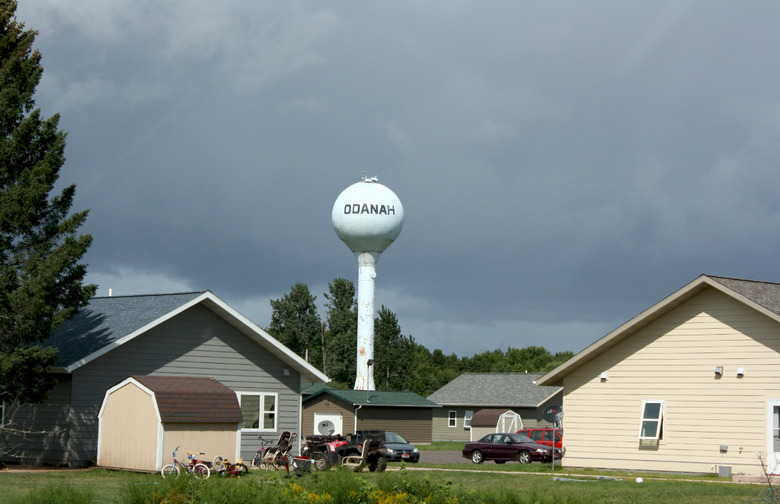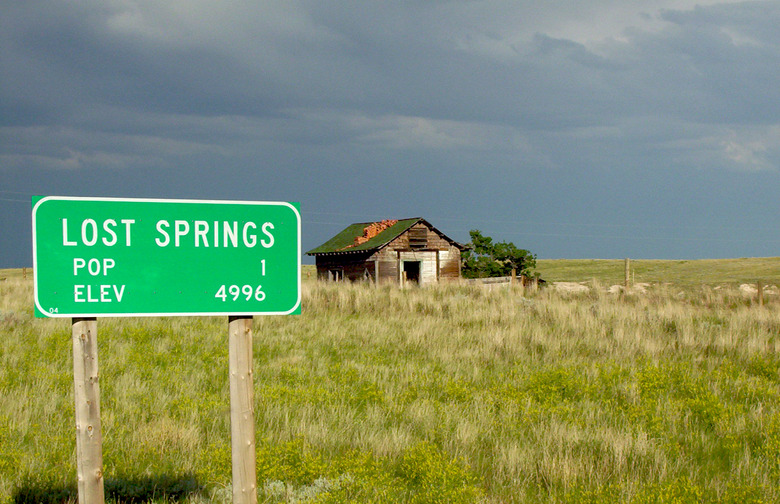The Smallest Town In Every State Slideshow
The Smallest Town in Every State
At The Daily Meal, we know a thing or two about our country's 50 states. We've previously rounded up the Strangest Fact About Every State, the Weirdest Law in Every State, and the Prettiest Town in Every State. Which left us wondering: What about the little guys? So we set out on a quest to discover the Smallest Town in Every State, and was it ever enlightening.
We sifted through data from the 2010 U.S. Census (the most recent national census completed) and found the tiniest towns, villages, boroughs, and CDPs (census designated places) in each state.
You may need a magnifying glass to spot some of these places, but each one offers a unique (and sometimes peculiar) view into our country's past. Some of these little towns flourished during the gold rush and coal mining heydays, with wild, romantic pasts. Some have been nearly decimated by natural disasters, ghosts, or the dreaded airport expansion. Each of these places has a story to tell, even if there may soon no longer be any residents left to tell it.
Enjoy this peek into truly small-town American life, as we check out the smallest town in every state.
McMullen, Ala. 10
This tiny town in Pickens County in western Alabama has dwindled from 66 residents in 2000 to just 10 as of the most recent U.S. census in 2010. Pickens is a dry county, but if anyone from McMullen fancies a drink, they can head to nearby Aliceville (a comparative metropolis, with over 2,000 residents), which voted to become "wet" in 2012. There's some pretty weird laws on the books; check out Alabama's strangest law here.
Hobart Bay, Alaska 1
Hobart Bay was first settled as a logging camp in 1889 in southeastern Alaska, in what would later be named the Tongass National Forest, the largest national forest in the United States. Hobart Bay may be at risk of losing its status come the next census, however. In the 2010 census, its lone resident was counted in the Hoonah-Angoon Census Area. On January 3, 2013 Hobart Bay was incorporated into the new Petersburg Borough. In the meantime, at least until the 2020 census, pristine Hobart Bay can enjoy its solitude and stunning views of Stephens Passage
Willow Canyon, Ariz. 1
This census-designated place lies in Pima County in southeastern Arizona, at a soaring elevation of 6,972 feet. It's down winding North Willow Canyon Road, adjacent to the Rose Canyon Campground, deep in the Santa Catalina Natural Area. There may not be anyone to talk to, but who needs to talk when there are hundreds of miles of gorgeous hiking trails around? And the chances are pretty good that you won't run into anyone you don't want to see.
Magnet Cove, Ark. 5
Magnet Cove is a mecca for geologists and mineralogists, as the nearby Magnet Cove igneous complex boasts a plethora of odd minerals. Encyclopedia of Arkansas claims that "there were more distinct minerals found in the five-square-mile radius of the cove than were found anywhere else on the planet." Though it has recently been proven that a small location in Russia is comparable, Magnet Cove can still claim to be the only place where kimzeyite is found. These crystals are named for the Kimzey family, which has resided in Magnet Cove for generations.
Little Grass Valley, Calif. 2
The land where Little Grass Valley lies was originally home to the Maidu Native American tribe, hunter-gatherers known for their intricate basket weaving. Little Grass Valley became a mining camp during the California gold rush, and to this day gold mines still exist nearby. A massive flood created a lake in the valley in 1963, and rental cabins now dot the lake's shoreline. Little Grass Valley lies within the Plumas National Forest in northern California.
Fulford, Colo. 2
Established in 1889, Fulford was a bustling mining town in the Colorado mountains, right on the spine of the Continental Divide. Once-optimistic pioneers eventually left after the mines turned out to not be as fruitful as first hoped and heavy winter snows began blanketing the mountains. Around World War II, a man named Heime was surveying for minerals in the area, and came upon the abandoned town of Fulford. He bought up all the land deeds for a few dollars each. Today, you can take Jeep "ghost" tours and pass abandoned cabins and mining relics as you follow old stagecoach roads through gorgeous alpine forest. Keep an eye out for elk, or one of the two remaining Fulford residents.
Fenwick, Conn. 43
This tiny borough, on the banks of the Connecticut River and Long Island Sound, is part of the Fenwick Historic District, full of beautiful Victorian and Shingle-style homes from the early twentieth century. Cross a causeway over a large cove and you're in the little town of Old Saybrook, a popular summer colony known for the Katharine Hepburn Cultural Arts Center and Theatre. The actress lived in Fenwick until she passed away in 2003 at the age of 96.
Hartly, Del. 74
This 49-acre town is part of the larger Dover, Delaware Metropolitan Statistical Area, but it is technically the least populous municipality in Delaware. It was founded in 1734, and according to documents passed down by local residents, is named after a Mr. Hart, who was a railroad employee and used his influence to help the small town secure a railroad station. The Hartly Hotel opened in the 1883 and housed a bar, a store, and an insurance business. These all closed by the 1940s, and the store was turned into the Hartly post office.
Brewster, Fl. 3
Brewster was founded in 1910 to accommodate the workers at the regional phosphate mine owned by American Cyanamid. The mine closed in the early 1960s, and the company offered the locals a choice: Buy their homes, or move and have the homes demolished. In 1962 the town was officially closed, and the deed was turned over to the state of Florida. American Cyanamid owed payment to the state for environmental damages it caused, and the town's deed served as partial payment.
Tate City, Ga. 16
This unincorporated community was originally founded as a logging and mining community, and is located right near the Georgia/North Carolina border on the Tallulah River. There's nothing for miles around, which makes the "Tate City Mall" sign on a decrepit wooden shed even more creepy, as Tate is too tiny for even a single store. People camping in the area tell tales of getting lost and accidentally driving "through" Tate, to the apparent dismay of the stone-faced locals.
Manele, Hawaii 29
This census-designated place is located on the island of Lana'i, which was once home to the largest pineapple plantation in the country. Nearby Hulopo'e beach is a top snorkeling destination and is considered one of the world's most beautiful stretches of sand.
Warm River, Idaho 3
Warm River is located next to its namesake river, right on the edge of the massive Caribou-Targhee National Forest. Grand Teton and Yellowstone National Park are also within a few hours' drive, and the nearby river is known for fly fishing and tubing. We suspect that this little town is only considered the smallest in Idaho because all the local bears weren't counted in the most recent census. Taking the ultimate American road trip? Here's where you have to eat when you head out west.
Valley City, Ill. 13
Valley City was once a booming river town, but flooding from the Illinois River and the onward march of time contributed to its decline. Most of the remaining population is related to the Westfall family, and the one remaining business in Valley City is a quarry. But it does receive a livability score of 69 from areavibes.com for its "Sunny Weather" and "High Graduation Rates."
River Forest, Ind. 22
This town of 22 is right on the banks of the White River, 39 miles outside Indianapolis. The town comprises 12 acres centered around one street, the aptly-named River Forest Street. The median age in the town is 58, with nearly 60 percent of the residents being male and 40 percent female.
Beaconsfield, Iowa 15
The very first Hy-Vee (now a chain of over 240 supermarkets in the Midwest) originated in Beaconsfield. It was founded in 1930 by Charles Hyde and David Vrendenburg (a who combined their last names to create the name "Hy-Vee"). It's now a community building, and is listed on the National Register of Historic Places.
Freeport, Kan. 5
Freeport was founded in 1885, and its first post office was established later the same year. Against all odds, the post office has remained open for 132 years. "When you lose a post office, you lose a little history," said Carol Peterson, Freeport's city treasurer and one of its five remaining residents. Freeport once held the distinction of being the smallest incorporated place in the United States with a bank — until the bank moved in 2009.
South Park View, Ken. 7
Incorporated in 1961, South Park View originally was a residential suburb of Louisville, with a population of 287 in 1970. When the nearby Louisville International Airport expanded, it created significant noise levels, according to the Federal Aviation Administration. A large portion of South Park View was eventually relocated, resulting in a massive population decline. At least those left behind were able to enjoy the lovely sights and sounds of the two new airport runways.
Mound, La. 19
This little village of 19 lies right near the banks of the Mississippi River, which separates Louisiana and Mississippi. Louisiana has the oldest earthen mounds in North America, with more than 700 recorded mound sites in the state. Mounds are artificial hills built by Native Americans most likely for burial customs. Visit the nearby Fitzhugh Mound, which has two remaining mounds of what once was a complex of seven. They serve as an active historic cemetery, and prehistoric ceramics found at the site indicate that the mounds date from between the years 1200 and 1541.
Littlejohn Island, Maine 118
Littlejohn is an island located in Casco Bay, off the southern coast of Maine. It's connected to nearby Cousins Island by a causeway, which is connected to the mainland by a bridge. This tiny island, with a total area of 0.7 square miles, is also home to the Littlejohn Island Preserve, a nesting place for bald eagles and great horned owls. Littlejohn may be too small for a restaurant, but you can always check out one of these places that serve lobster rolls that make it worth traveling to Maine.
Port Tobacco Village, Md. 13
Tucked away at the tip of an inlet of the Potomac River, this little village was settled by the English in the seventeenth century. It flourished as a port for the tobacco trade, with access to Chesapeake Bay and the Atlantic Ocean. Siltation at the head of the Port Tobacco River contributed to the eventual demise of its river traffic, and the town was bypassed by the railroad, which all led to the village's decline. The siltation may have spelled eventual doom for the little village, but many archaeological sites were preserved because of it, and it's now one of the most abundant areas for studying the blended history of colonial and Native American cultures.
Popponesset Island, Mass. 26
The tiny island lies in Popponesset Bay, part of the larger Nantucket Bay, and is right across from mainland Cape Cod. It was once used as a training ground for amphibious assaults during World War II. The next time you're in the area, try one of these "chowdahs" for an authentic taste of the Cape.
Pilgrim, Mich. 11
Pilgrim is practically surrounded by water and nature. It lies directly east of Lake Michigan, west of Crystal Lake, and south of the Betsie Dunes Nature Preserve, a fragile and unique habitat located along an important migratory route for diverse bird species. If any of Pilgrim's 11 residents need to get out of town fast, the single-runway Frankfort Dow Memorial Field public-use airport is just down the road, but residents will need to make their getaway during business hours, as it is only staffed from 8 a.m. to 5 p.m.
Funkley, Minn. 5
Mayor Emil Erikson owns Funkley's Bar off Highway 71 in northern Minnesota. He and his dog Chopper welcome new guests by handing out Funkley bucks, which bear his likeness and are each good for one free drink. When it's time for the few Funkley council members to meet, the bar becomes City Hall.
Satartia, Miss. 55
Satartia lies on the east bank of the Yazoo River in central-eastern Mississippi, and was briefly featured in the 2000 movie O Brother, Where Art Thou. A vertical lift bridge was built over the Yazoo River in 1976 and has since been the site of some unexplained paranormal occurrences. Reports of phantom moanings, yellow-green bubbling water, the scent of rotting flesh, and a sudden, crushing sense of panic have been described by multiple residents over the years. Some say the bridge and the river are haunted by the Yazoo Indians, who inhabited the area long before Europeans arrived. Local legends suggest that after being defeated by the French, tribe members were marched into the river to their deaths, and still haunt the area.
Baker, Mo. 3
Because this Missouri town is so small but its three residents are so rich, Baker ranks third among the highest-income places in the United States. Another fun Baker fact? It's one of only two towns in the entire country to be within 29 miles of four different states.
Elkhorn, Mont. 10
Ask someone to describe what they imagine a ghost town looks like, and Elkhorn wouldn't be far off. It was a booming town of 2,500 residents in the 1880s and 1890s during Montana's silver and gold rushes. Elkhorn's prosperity declined over the years due to many factors, including a diphtheria epidemic, a decreased desire for silver, and railroad service eventually being suspended. The Western Montana Ghost Town Preservation Society has undertaken renovation of some buildings, with the 1893 Fraternity Hall being one of the best-preserved buildings. A few of Elkhorn's cabins have also become reoccupied.
Monowi, Neb. 1
We've heard of a one-horse town, but how about a one-woman town? Eighty-three-year-old Elsie Eiler is the last remaining resident of Monowi, since her husband (whom she met in the third grade) passed away in 2004. She serves as the town's mayor, librarian, and bartender of the Monowi Tavern. She even pays taxes to herself.
Logan Creek, Nev. 26
Little Logan Creek lies on the eastern shore of Lake Tahoe. Feel like rolling the dice? Drive 16 miles east to Carson City. Want to take a hike? Hop on the Tahoe Rim Trail, a 165-mile hiking trail that encircles the lake. If you need a snack while on the trail, pack one of these eight healthy hiking snacks.
Hart’s Location, N.H. 43
Tiny Hart's Location, located in beautiful northern New Hampshire, proclaim themselves to be the "first in the nation to vote," casting their ballots in the 2016 Presidential Election right after midnight. The origins of this practice started in 1948, when 7am voting was established as a way to accommodate the railroad workers' schedules, to maximize voter turnout. A New Hampshire law was established in 1952 which allowed "towns with fewer than 100 residents to open the polls at midnight and close them as soon as all registered voters have cast their ballots," according to the Hart's Location website.
Tavistock, N.J. 5
Not only does it have the distinction of being the smallest town in New Jersey, but Tavistock is probably the only borough ever incorporated with the sole intention of allowing people to play golf. In the early 1900s, playing golf on Sundays at Haddon County Club in Haddonfield, New Jersey, was prohibited, due to blue laws banning Sunday sporting activities. Local golfers did not approve, and in 1921 Tavistock became incorporated by a small group of people who believed in life, liberty, and the pursuit of all things green.
Newkirk, N.M. 7
These days, the tiny town of Newkirk is getting fewer kicks, as it lies right off historic U.S. Route 66, at an elevation of nearly 4,600 feet. Route 66 started to bring people to Newkirk in the 1930s, when its population reached a peak of 240 residents. However, when Interstate 40 was built in the 1960s, it by-passed many of the small towns along Route 66, leading to their eventual demise. Today, the ruins of a once-vibrant small town greet visitors as they drive past Newkirk. The original post office, built in 1910, is still standing, as is an abandoned Shamrock gas station, an antique "antique"store, and a decrepit watering hole named Carlo's Place.
Dering Harbor, N.Y. 11
This tiny, old-money village on the north side of Shelter Island is nestled between the forks of Long Island's east end. Rent a kayak and paddle through the gorgeous Mashomack Wildlife Perserve, keeping an eye out for ospreys and the endangered piping plover. Residents of Dering Harbor can also brag that no one who calls the tiny village home lives below the poverty line, and in fact most live far, far above it, as the median family income is $98,750.
Dellview, N.C. 13
Nearly all the residents of tiny Dellview in western North Carolina are relatives, and they pay no taxes to the town, which has no police department, or water or sewer system. Way back, the two Dellinger families, who were poultry farmers, got fed up with local stray dogs killing their chickens, so in 1925 they incorporated the town in order to create a law that allowed them to shoot dogs. It's probably safe to say that those dogs wish Dellview had never become a town.
Ruso, N.D. 4
Right off Highway 41 in North Dakota is Ruso, which locals say was named for the homeland of the Russians who settled there in 1906, and is either coined from the first two letters in the words "South Russia," or is a play on the Russian word which means "south of us." A handful of abandoned buildings dot the tranquil landscape, and parked in a field outside a crumbling church is a curious bus advertising the "Huntley Project Red Devils."
Rendville, Ohio 36
Rendville was established by the Ohio Central Coal Company in 1879, and saw years of struggle between white and African-American miners. Despite racial tensions, the town grew to a population of nearly 2000, mostly young males, and reached its peak in the 1880s. Violence and gambling were the norm, and the town averaged one bar for every 25 residents. The coal mining industry began floundering in the 1890s, and Rendville began a steady decline from which it never recovered. Despite its hardships, the town produced many notable figures, including Pastor Adam Clayton Powell Sr., and Roberta Preston, the first African-American woman postmaster in the United States of America.
Lotsee, Okla. 2
The town of Lotsee is actually the Flying G Ranch, a 2,000-acre cattle ranch and pecan farm incorporated by founder George Campbell in 1963. The two remaining residents are George Campbell's daughter, Lotsee Spradling, and her husband Mike. She runs the Nut Shop, the lone storefront in "town."
Lonerock, Ore. 21
Lonerock gets its name from the prominent, 35-foot high rock which stands behind the 1898 Methodist church. It lies south of the Columbia River and northwest of the Umatilla National Forest. This teeny Oregon town reached a peak population of 82 back in 1930. The original wooden jail — which was built in 1891 and used for the rowdy local sheepherders who would come into town to celebrate — still remains.
Centralia, Pa. 10
A coal seam fire began burning under the borough of Centralia on May 27, 1962, resulting in the town's slow abandonment over the past 50 years. The fire, which is 300 feet underground, originally began during a routine attempt to clean up a town landfill that was located in an abandoned strip-mine pit, which happened to be connected to a myriad of coal-filled, underground mining tunnels. Firefighters set the dump on fire, as they had always done in years previous, but this time the fire was not fully put out. Other legends persist that a coal fire from 1932 was never fully extinguished, and had just finally reached the landfill in 1962. Over the years, multiple excavation projects to discover the perimeter and depth of the fire, as well as plans to flush the fire, either failed or were abandoned. In 1992, all real estate was condemned by the Commonwealth of Pennsylvania and claimed under eminent domain. Officials have allowed the few remaining residents to continue living in their homes, but when they either pass away or decide to move, the rights to their houses will be taken by the state. Scientists believe the fire could continue to burn underground for 250 more years.
Watch Hill, R.I. 154
Situated at the southwesternmost point in Rhode Island, this charming coastal village is a tight-knit community year round. Its population appears to drastically increase over the summer, when tourists descend upon the resort village, flocking to visit its gorgeous beaches and the Ocean House, a Victorian-style hotel right on the water. Though many famous faces own holiday homes here (Taylor Swift, Conan O'Brien), the actual population is only 154. Find a way to stop and grab some of Rhode Island's famous fried clams at Flo's Clam Shack on the way to Watch Hill.
Smyrna, S.C. 45
This small South Carolina town of 45 was incorporated in 1895 and is named for the Smyrna Associate Reformed Presbyterian Church. Visit the nearby Jackson's Furnace Site, a historic archaeological site that was added to the National Register of Historic Places in 1987. It's one of two sites affiliated with the King's Mountain Iron Company, an iron mine that operated from 1815 to 1860. You can imagine the laborious life of a miner in the 1800s as you view the original stone foundation of an iron furnace, an earthen sluiceway, and old slag heaps.
Hillsview, S.D. 3
Not surprisingly, the three residents of Hillsview, South Dakota, are part of one family. Their town is named such because of its relatively high elevation, affording the little town a lofty view at 1,850 feet. Just to the west lies the Missouri River and the Standing Rock Reservation, but if the family wants to travel to Hill City, the town we recently voted prettiest in the state, they'll have to drive a bit farther west... about 330 miles yonder.
Saulsbury, Tenn. 81
Located along Highway 57 in southwestern Tennessee, Saulsbury's origins date back to an earlier settlement named Berlin. When a Berlin landowner presumably refused to sell his property to the railroad company building the Memphis and Charleston Railroad, tracks were instead laid a mile north. These tracks crossed the land owned by Burrell Sauls and Berry Futrell. The subsequent railroad station was named the Sauls-Berry Depot, and Saulsbury was incorporated in 1856. Saulsbury was briefly taken by the Union Army during the Civil War, but eventually returned to Confederate control. Quite a few antebellum buildings and homes are still preserved in Saulsbury.
Guerra, Tex. 6
Guerra, which means "war" in Spanish, lies near the Mexican border, close to the Falcon International Reservoir and the Rio Grande. Because of the area's red cattle, early Mexican settlers called it El Colorado. Never one for growing, Guerra reported a population of 100 in 1914, 75 in 1968, and 15 in 1990. The post office, which has been run by one family for three generations, also functions as the town museum.
Bonanza, Utah 1
Bonanza sits at an elevation well over 5,000 feet in northeastern Utah on the Colorado Plateau, an area known for oil drilling and fossil fuel extraction. It was first settled in 1888 when gilsonite was discovered in the area — by Samuel H. Gilson, who named it after himself, naturally. This glossy, black solid resin looks similar to coal and asphalt and has a high melting point. Bonanza's lone neighbor is the Bonanza Power Plant. Oh, and the beautiful, massive blue sky.
East Montpelier CDP, Vt. 80
This tiny CDP comprises the central village of the town of East Montpelier, right off of Highway 2 in the Green Mountains. Try some authentic Vermont maple syrup at the Bragg Farm Sugar House and Gift Shop, which only opened in 1979 though the farm has been producing maple syrup for eight generations.
Mappsburg, Va. 60
This little town of 60 lies on the Virginia portion of the Delmarva Peninsula, which is also occupied by Delaware and the eastern shore of Maryland. Chesapeake Bay lies to the west, and the Atlantic Ocean to the east. Nearby lies the Assateague Island National Seashore, known for its herds of wild ponies. Every year in July, the fire department rounds up the herds of feral ponies to drive them across Assateague Channel for the traditional pony auction. This annual event was portrayed in the popular children's book Misty of Chincoteague by Marguerite Henry, which was published in 1947. This area also produces some of the best wine on the East Coast due to its maritime climate and long growing season.
Laurier, Wash. 1
Located right on the Canadian border in the Colville National Forest is quaint Laurier, home to a single resident. The only people who tend to pass through this very remote rural border crossing are traveling on along Route 395 from the US to Canada, or vice versa. The United States built the border crossing at Laurier in 1933, and in 2014 it was listed on the US National Register of Historic Places. The town was named for Sir Wilfred Laurier, who served as Canada's prime minister from 1896 to 1911. Border crossing in your future? Here's a list of foods you can't bring into the US (plus some treats you should).
Thurmond, W.V. 5
Thurmond was once a prosperous train town, due to its location along the Chesapeake and Ohio railroad lines during the heyday of coal mining in the New River Gorge. The infamous Dun Glen Hotel reportedly hosted the world's longest-lasting poker game, which lasted 14 years, according to Ripley's Believe It or Not. Today, it's practically a ghost town — in more ways than one, as reports abound that the few remaining structures are haunted.
Odanah, Wis. 13
This census-designated place is right on the Bad River in northern Wisconsin, near Lake Superior and the Apostle Islands National Lakeshore. Odanah means "village" in Chippewa, and this little community of 13 is the administrative and cultural center of the Bad River Band of the Lake Superior Tribe of Chippewa Indians. Being so close to Lake Superior, the winters are frigid and long, and the summers are warm and short.
Lost Springs, Wy. 4
The sign on Route 20 used to say "Population 1, Elevation 4996" — but that's old news, based on the 2000 census. As of the 2010 census, the population has increased 300 percent, and the town now boasts four residents. Mayor Leda Price has lived there for 37 years, and also owns the general store. According to legend, the town was named by railroad workers who couldn't locate a spring shown on their map.
